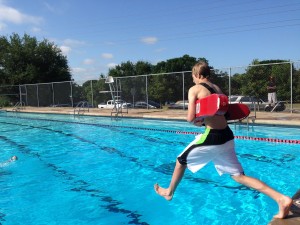Back to School
The end of summer and consequential start of the school year is often met with mixed emotions. Gone are the days of waking mid-morning (or even later for some of us); gone is the option to leisurely make our way through the day; and gone are the lazy evenings when the sunset vanishes as slowly as molasses. Say farewell to these luxuries and hello to alarm clocks, swift morning routines, and fully-packed evening schedules. The majority of children eagerly await the more laid back tone that summer provides—adults likely look back in fondness, as well. However, there is much to be said about the positive outlook and “fresh start” mentality that the infamous back-to-school time provides.
FROM THE CHILD’S PERSPECTIVE
For school-aged children, back-to-school time is met with an array of different emotions. Depending on age, temperament, and other circumstances, each child reacts to the start of the school year differently. While some are eager and itching to go back, others are anxious and worried. It is important for parents and teachers to consider that back-to-school jitters can be overwhelming for some, and downright debilitating for others. Children and teens are transitioning abruptly from freedom, leisure, and relaxation to hyper-organized schedules, taxing school work, and the demanding social aspects of the school environment. This quick shift can create stress, sleeplessness, irritability, etc. Therefore, it is the role of the adult to support and motivate their children during the transition back into the school routine. All things considered, kids truly learn how to adapt and juggle this transitional time rather quickly, making it easier as the years progress.
FROM THE PARENTS’ PERSPECTIVE
Children are not the only ones put through the ringer at the start of the school year. Parents are tossed back into the demanding routine just as readily as their young learners. With all of the forms, records, supplies, etc., necessary to begin the school year, it is no wonder that parents can also feel the stress. It is important that educators be mindful of the demands put on adults during this time of year. Not only might these parents be dealing with stressed or anxious children, but the role of “organizer” or “manager” now emerges full-force. That said, teachers should aim to be understanding of the “hovering” or apprehensive parent by providing reassurance, support, and guidance, especially when it comes to parents who are just beginning the school process.
FROM THE EDUCATOR’S PERSPECTIVE
Students would be elated to know that their teachers are just as anxious as they are about the start of the school year. Even seasoned veterans describe back-to-school dreams as part of August’s tell-tale signs that summer is coming to a close. Just as children and parents scurry about preparing supplies, books, and schedules, teachers are in the exact same boat. In fact, teachers begin the mad dash long before students have finished their summer vacations. As scary as it may be, especially for the younger children, teachers should remind students that this is a new year for EVERYONE—that we as educators are here to support, inspire, and motivate.













